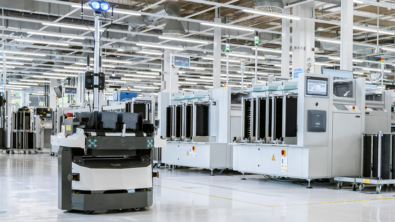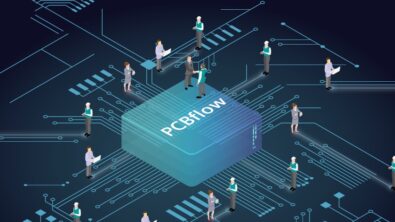How is product design like a Thanksgiving meal?

In September, Siemens Digital Industries Software announced Xcelerator as a Service (XaaS). Now, companies of all sizes can provide their designers and engineers with best-in-class software and services that are flexible, scalable and allow access from anywhere, at any time, from any device.
As we enter the final six weeks of the year, I wanted to spend some time speaking with some folks at Teamcenter to learn more about their products and how XaaS is impacting their customers and find out what their favorite Thanksgiving dish is.
On premise vs. cloud
Xcelerator as a Service is taking the necessity for on-premises IT away and allowing businesses to operate from anywhere. When I spoke with Bill Lewis, Director of Product Marketing for Teamcenter and Polarion, I learned that prior to the XaaS announcement lots of products had integrated their on-premises products with Teamcenter X (part of the Siemens Xcelerator portfolio) so that they can start collaborating via the cloud on the types of data that they’re creating.
“Teamcenter X is a great example of what XaaS can do because people can take advantage of the full functionality of Teamcenter and get it in a Software as a Service model,” Lewis says. “Teamcenter X is one of the first steps that companies have taken on their XaaS journey.”
SaaS Software: From SMB to large enterprise
As previously mentioned, XaaS means that companies of all sizes can get out of the business of the IT heavy lifting and can focus on their core competencies of developing their products. This opens the door for more innovation and creating new world class solutions while Siemens focuses on delivering best-in-class software and services.
Small-to-medium sized businesses, for example, can take advantage of Xcelerator’s offerings because it significantly reduces their IT infrastructure. It allows scalability when the need for more or less subscriptions arises and flexibility to introduce new software and solutions on the turn of a dime.
“Now they’ve got world class PLM and don’t have to have the big IT infrastructure and organization to support it,” Lewis shares regarding Teamcenter X, adding, “So, it really enables SMBs to take advantage of PLM much more easily than they ever could in the past.”
Katie Schwarzwalder, Senior Marketing Coordinator for Teamcenter, adds, “The XaaS option opens the door to a lot of smaller companies that are able to access and pay for their software in a different format.”
From a large enterprise perspective, there are costs associated to owning and operating any enterprise IT system: infrastructure, the machines, the hardware, the network capacity, etc. Any enterprise IT system is going to have costs in that regard, including the IT people who work on it.
As with Teamcenter X, for example, these large enterprises no longer have to invest in that on premises system, computing power and storage capacity.
Lewis says, “That comes as part of the overall package and, because it’s on the cloud, they can ramp up and ramp down very quickly and very easily. So, if it’s a large enterprise, say it’s a Tier One supplier and they’re bidding on new business with their customers — if they win that new business, they can very quickly and easily scale up their Teamcenter deployment to accommodate the new work. When that work is done they can scale it back down.”
Lewis mentions that when you’re working and deploying on premises, you have to size your IT deployment almost for the worst-case scenario. When you win new business, it’s a big undertaking, both with time and costs, to bring in new machines, new hardware and expand your network.
With Xcelerator as a Service, it’s almost like flipping a switch.
Finally, multiple sources indicate that companies investing in a SaaS solution versus on-premises can realize savings of at least 15 percent.
Collaboration: A single source of truth in SaaS
The ability to access data and information at anytime from anywhere means users have a single source of truth. Teams work on designs in real time and don’t have to pass files back-and-forth with each iteration. That’s the part that breaks down barriers. You can have a mechanical engineer and a software engineer working simultaneously and validating their work, respectively.
What about those working outside the company? Contractors, suppliers and vendors may all need to work on the same design and it’s not cost-effective to have them operate independently and waiting for changes and new requirements.
Teamcenter X, for example, has a couple different ways to collaborate with those in the supply chain.
“A supplier can log directly into the Teamcenter environment that the OEM owns and operates and can access kind of a walled garden – just the right data they need,” Lewis states. “It’s real time and it’s never out of date because they’re coming right into Teamcenter to access it, even though they’re the supplier, not the OEM.”
To add a layer of IP security, OEMs provide the level of access they deem necessary. When the suppliers
log into the portal, they can only access the information that the OEM published and bring their data back in when we’re done.
This level of collaboration, where each user brings their specialty to the table reminds me of an upcoming holiday.
XaaS and Thanksgiving dinner
As families in the United States gather together to enjoy the Thanksgiving holiday, there won’t likely be a single person making the large feast. The same goes with building complex products. Multiple engineers and designers and a variety of teams bring something to the table to create a fantastic end-product.
XaaS is all about collaboration and breaks down the silos between the different business segments so everyone can work together. “It’s much like a potluck on Thanksgiving,” Schwarzwalder explains comparing collaboration to the much-anticipated November feast. “Thanksgiving dinner is daunting, but when you have your aunts and uncles bringing the sides then it gets much easier and you’re able to put together a beautiful meal.”
Xcelerator as a Service takes the massive amount of information from a lot of different people, backgrounds and disciplines and allows them all to work together to get that done while ensuring all the stakeholders can access the information they need, when they need it, from anywhere their device can connect to the internet.
XaaS: Reflecting on what we’re thankful for
“The one thing I’m thankful for…” Lewis says, “…is when it comes to XaaS, that because we’ve made it easier for SMB and startups to access our technology, I’m getting to interact with some very innovative, fast-paced companies who are doing some really cool stuff.”
For Katie Schwarzwalder, she is thankful for what Xcelerator as a Service puts in front for our customers and providing a solution that is easier and makes more sense for them. “I definitely think our SaaS solution is breaking down those barriers to make it simpler for our customers.”
Thanksgiving favorites
Bill Lewis loves the stuffing on Thanksgiving and Katie Schwarzwalder is fond of something called tourtière.

What is a tourtière?
Schwarzwalder explains: “My family is half-Canadian — my mom was born and raised in Canada and we took her family recipe of a Canadian meat pie, which is basically what it sounds like: ground chuck, ground beef and ground pork with potatoes and onions and celery.”
For those in the Midwest, it’s similar to a pasty, but with different seasoning. “That’s kind of like our favorite thing to do. We make them as a family.”


